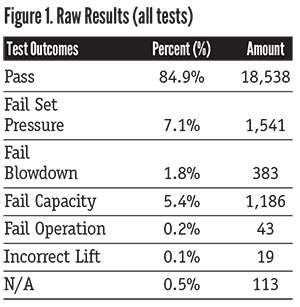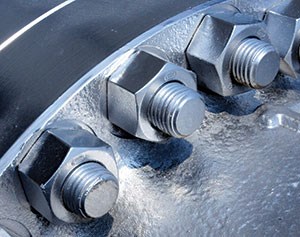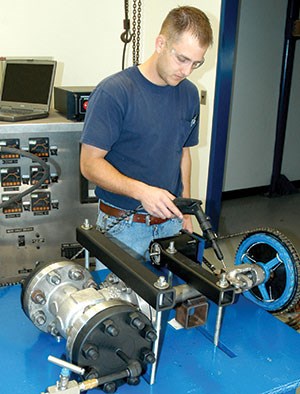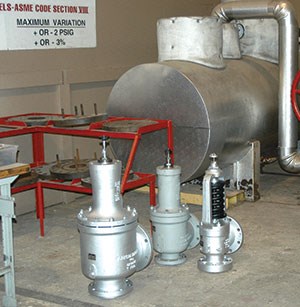Repair and maintenance is one of the most critical areas of today’s valve world and attendees at the Valve Repair Council’s first Valve Repair Meeting & Exhibition last fall found out why. From the value of radio-frequency identification (RFID) tagging to the latest proposed standards, speakers brought their audiences up to date while vendors to the industry showed the latest in products and services that can keep this nation’s facilities in tip-top shape.
The November 2012 event took place in Houston. Here are some highlights from the presentations made at the conference:
PRV Reliability
While about 85% of tested valves passed (figures that look positive), Ball pointed out that this means a 15% failure rate (Figure 1).
He also said that, while not all failures are critical, those that fall into the critical range include those with set pressure higher than 116%, valve capacity less than half of what the valve is rated, and rupture disc failures to open. He stressed that the codes and standards are vital and that it is important to recognize the value of ASME Code/NB Certification and Repair Certification. These tight requirements provide extra margins for safety, and the test issues cause suppliers to be more vigilant than might otherwise be the case. He also said it’s important for valve users to provide feedback on any issues they have come up against, and if there is any suspicion about the validity of certification, they should go to the national board.
QUALITY, RISK AND BRAND
In his work conducting performance evaluations and failure analyses, Vinod Sharma, senior managing engineer, Mechanical Engineering, at Exponent is called upon to address questions of liability, product recall, economic and market due diligence, technology assessment, business process improvement and intellectual property. From that perspective, Sharma pointed out that only a small percentage of valves are a problem, but those that are can create catastrophic failures and losses. While everyone in the industry focuses on safety as well as making and saving money, Sharma said it is important to set up procedures and practices within your company to protect against potential charges of liability for catastrophe.
CRITICALITY OF BOLTING
He explained how critical the common bolt can be.
“Bolts are really the only way to join big pieces of equipment, which allows you to take them apart to maintain the equipment, but there are many factors that must be considered,” Gans said. “Bolted joints must stay together until a decision is made to take them apart. It is inexcusable for a joint to fail because we have the tools available to calibrate and make them 100% fail-safe,” he said.
“What we do not have are the people trained to meet the requirements,” he added. While welders have to be certified, anybody in a plant can pick up a tool and close a joint, he explained. This is despite the reality that there are so many considerations, including enough but not too much tension and the fact the three component groups of a joint, which are flanges, fasteners and gaskets, must operate together as a system. The bolting sequence is critical, he added. Each part must be right to obtain a seal, and you can’t compensate for a problem in one part of the system by overcompensating on another part of the system.
It is absolutely critical that flanges be aligned properly, and even though a system can get up and running, radial or lateral misalignments in that system create the chance for leaks or huge problems later on. Bolts are not flange alignment tools and the proper torque is absolutely essential, he said.
RFID
RFID technology holds much promise for the valve industry and is especially promising in maintenance and repair. Brent Scheps, president, and Cory Foster, sales representative at IDS Tag enumerated the benefits RFID technology has for the valve industry and explained how such technology is used during a repair.
While RFID technology has been around since the 1960s, it recently became sophisticated enough to provide valuable information far beyond the number of widgets in a warehouse, in both active (information can be sent and received) and passive (for tracking) forms, he pointed out. Tags are just a computer chip and an antenna that can be housed in anything: a steel container, pipes, anywhere. Even with a passive tag, as long as that tag is intact, it is readable, he said.
RFID tags, which are custom fit to a facility and its needs and are designed for maximum accuracy, reliability and durability, are becoming increasingly important in all industries, including valves. The technology provides a unique number that prohibits counterfeiting and any purchaser can find out if it’s a valid piece of equipment by tracing that number. RFID also makes it much easier to track the history of the equipment throughout the supply chain. Additionally, all of the documentation for the repair or replacement of any asset, such as a pressure relief valve, can be housed in the chip. That means maintenance turnaround times and the costs associated with them are greatly reduced. Information can also be added in the field to the “file” that is in that tag so that maintenance and repair can be updated.
FUGITIVE EMISSIONS
Davis also talked about API 624, a new standard currently under development for type testing of rising stem valves equipped with flexible graphite packing for fugitive emissions. The standard specifies the requirements and acceptance criteria (100 parts per million by volume) for fugitive emission testing of rising and rising-rotating stem valves equipped with packing previously tested in accordance with API Standard 622. The standard is key “because now you know that the packing that goes into the valve must have already been tested by 622,” Davis said. “This reinforces the fact that the packing manufacturers must be doing the testing. It is not the valve or refurb or repair companies [that must test]—it is the packing companies.”
The test is only 310 mechanical cycles and three thermal cycles.
BEST PRACTICES
In their presentation, Bob Donalson, operations manager, North America Oil and Gas Service, and Kevin Simmons, global service and aftermarket manager, Pressure Management Group at Pentair, discussed maintenance and repair programs for pressure relief valves, pointing out that much goes into the true cost besides the initial product cost.
Be sure to check VALVEmagazine. com for more in-depth coverage of some of the presentations from the 2012 Valve Repair Council Repair Meeting & Exhibition.
For extensive information on the specifics of presentations, refer to VALVEmagazine.com. Key points the presenters brought out are:
- PRVs have a critical role in maintaining safety and protecting life and property.
- Know applicable codes and standards.
- Seek expert assistance when sizing and selecting valves.
- Manage the lifecycle costs to reduce maintenance and associated operating costs.
- Take no shortcuts and follow manufacturer’s recommendations when repairing valves. Experience is critical.
- Reduce maintenance costs by managing parts and spares.
- Implement an asset management program to improve uptime, optimize planning, resourcing and spend.
- Communication is key. Best results are achieved when operators, valve manufacturers and service providers work together for a common goal.
Kate Kunkel is senior editor of VALVE Magazine. Contact her at kkunkel@vma.org
RELATED CONTENT
-
Ball Valve Repair 101
From time to time, we are re-posting well-received or particularly valuable articles that have previously run on VALVEMagazine.com so that those who might have missed them will be able to catch up on the best of the best.
-
Isolation Valves for High-solids Severe Service
Understanding suspended solids and their effect on equipment is critical in choosing isolation valves for slurry service.
-
HVOF Coatings for Severe Service Valves
Chrome carbide is one coating that can be done during manufacturing or repairs that extends service life of valves and other flow control components.












 Unloading large gate valve.jpg;maxWidth=214)


